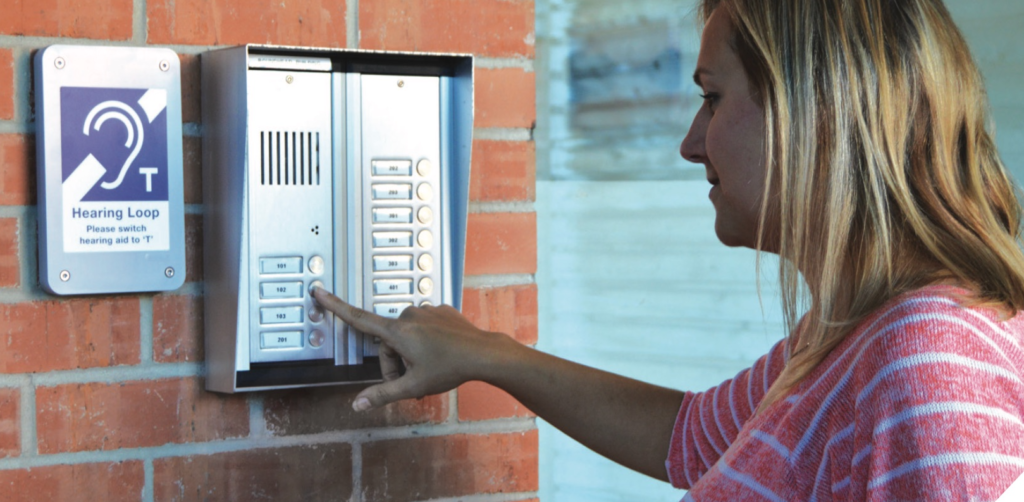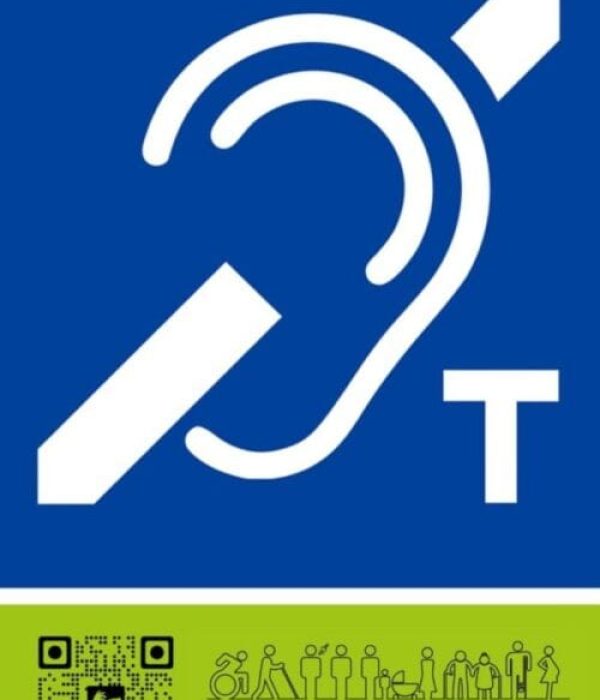The Direct Access guide to Counter Loops

Whether for retail, bank, library, or education settings, providing suitable and compliant loop systems for public-facing sites makes the difference between a deaf and hard-of-hearing person accessing your services completely barrier-free, or becoming a victim of discrimination.
Failing to provide suitable and compliant counter-loop systems is considered a failure to adhere to the Equality Act 2010, which you might already be aware was passed into law to protect the rights of disabled people, and more broadly, encourage equality within our society.
For these reasons, it is important that all building or facility owners, both public and private, government-ran or independent, consider whether they might be failing in their responsibility to provide auxiliary aids to deaf people (and by extension be breaking the law). Accessibility audits – a service which we provide, are recommended to be carried out every three years as a way of ensuring that facility owners are doing everything, they can for the millions of disabled people in the world who deserve the right to access and occupy space that we all enjoy.
It is especially important to protect these rights because people with a hearing impairment make up the largest proportion of disabled people (1 in 10 of the world population). This puts the number of deaf people out there in the millions.
So, you may now be wondering, what do I need to do in order to be compliant? Well, it starts with providing a Counter Loop, to begin with. If a customer or member of the public requires face-to-face interaction with staff, then you are accountable for providing a hearing loop that facilitates a deaf person’s ability to communicate. The Counter Loop itself must conform to the BS8300 – Code of Practice. By which accessibility is measured and referred to in a legal challenge, Induction loop systems should conform to BS 7594 and BS EN 60118-4.
Counter Loop systems for retail counters or desks are expected to conform to certain characteristics in order be considered suitable for use. These include the following;
They must be always switched on and powered by the mains.
Located and fixed in a position where the magnetic field produced by the loop has been calculated and tested to be compliant with the EN601118-4 standard for comfortable use by the hearing aid wearer.
Available at all desks where a hearing loop sign is located.
Use an external directional microphone if required for a busy, noisy environment, that should be located as close to the intended power source (the member of staff’s mouth) as possible to avoid picking up unwanted background noise.
Portable loops must be avoided as these variants require charging and have an auto shut-off feature after 10 to 60 mins to protect the battery life, therefore rendering them unsuitable for use.
Due to being, well, portable, portable desk loops do not adhere to the EN601118-4 standard. This is because They are often moved by untrained staff and left facing in the wrong direction, placed at an unsuitable height, or adjusted to produce the wrong signal strength. The EN60118-4 / IEC 600118-4 standard is a measurement of the signal produced by a system, so no single component of the system (such as a portable loop) can claim to be 60118-4 compliant without being installed and commissioned.

Furthermore, loop signs should not be advertised unless suitable Counter Loops are readily available at the nearest counter. For this reason, using one loop sign per Counter Loop is encouraged. Portable counter loops are, again, not acceptable because they would require a deaf person to wait, which is both alienating to deaf and hard-of-hearing individuals and not true equality of access.
Another issue with portable counter loops is that they often have an omnidirectional microphone installed within the unit, which creates no benefit to deaf users, as the intended sound source only must be a few feet away for the microphone to pick up all the noise in the immediate vicinity of the loop, therefore rendering the Portable Loop no different to what a deaf person’s hearing aid can already achieve.
Providing suitable and counter loop systems is a win-win for everyone, because not only are you adhering to the law, but you are in equal part nurturing the ability for other people to visit your site, make it more popular through word-of-mouth, and therefore stand out from the crowd. If you run a public-facing business, this means making more money. And if you are not, it means you can broaden your employee options to include disabled staff and become a more ethical and respected business.
Direct Access partners with industry leaders Ampetronic to provide suitable and compliant Counter Loop systems that go beyond the legislative recommendations for increased comfort, ease of use, and accuracy. If you are looking to provide the highest-quality Counter Loop on the market for your site, take a look at our Hearing and Induction Loop systems page and find a solution that’s right for you and your disabled visitors.